Abstract: The National Highway Traffic Safety Administration (NHTSA) conducted a crash test using a five-star vehicle safety rating system. According to foreign media reports, NHTSA or in 2018 years adopt the BSD blind spot detection requirements after the five-star vehicle safety rating system test, to promote BSD blind spot detection technology to become 19 models of the standard. NHTSA in the recent safety simulation test, evaluation of BSD blind spot detection technology may avoid at least 62,000 collisions, which means at least 3,000 cases to avoid injury, or 61-95 fatal accidents.

Foreign media said, NHTSA or consider the five-star rating test POV, POV Pass-by and SOV pass-by three scenarios to test BSD blind spot detection function, that is, with the speed side by side, unilateral overtaking, both sides overtaking and other scenes.
Blind spot monitoring system
The blind spot is monitored based on the ultrasonic and radar sensors on the side and rear of the vehicle. The system monitors the rear and rear side of the vehicle. The blind spot monitoring system will not activate the sensor system when there is no vehicle behind the adjacent lane. The system is not responsible for detecting whether the vehicle deviates from the original lane.
Radar sensors (such as RFbeam's K-LC2) or camera are responsible for monitoring the back and side of the vehicle's road space and displaying a visual signal on the exterior mirrors to indicate whether there is a moving car in the blind spot area. Some models also provide additional tactile warnings to the driver when they want to change lanes (by turning the lights) regardless of the presence of a vehicle in the blind spot area, that is, vibrating their seats. Although each car manufacturer is used to warn the driver of the different design, but the back mirror near the indicator is necessary.

The so-called blind spot, that is, by the vehicle B column to block the rear view. When the system detects a hazard, the yellow warning light on the side mirror or inside the A column will begin to flash.
Different car prices on the system of different titles, mainly divided into blind spot monitoring, blind spot monitoring, blind spot information system, but in fact are the same function of the system. The first two use more frequently, only Ford, Volvo, Lincoln will be such a blind spot information system. Audi called Side Assist. Some car prices will be called active blind spot detection. Correspondingly, there are active blind spots detection there is passive blind spot detection, the latter detection capability as the former. Some passive system only after the car beyond the car bumper to be able to detect, simply, that is, after the car has been in the side of the car, while others can detect the rear of the body within the scope of 3-5 vehicles.
The lane departure warning is responsible for detecting whether the vehicle is driving the current lane. The front information is collected using a front view camera mounted on the rear of the windshield. When the owner changes the lane, the driver will receive a visual warning on the dashboard display.
BSD has been equipped with the brand and models are basically luxury models, I believe there will be more and more vehicles to install this system.
Overview of CAR70 Mid - range Radar
Product features
CAR70 is a very cost-effective Mid-Range K-band millimeter-wave radar sensor system with a monitoring distance of 50 meters. With a high-complexity LFM + FSK modulation mode, the CAR70 can detect the distance, angle with a high range and speed accuracy.
CAR70 has the functions of blind spot detection (BSD), lane change assistant (LCA), rear cross traffic alert (RCTA),exit assistant function (EAF), forward cross traffic alert (FCTA), etc. The product function diagram is as follows:
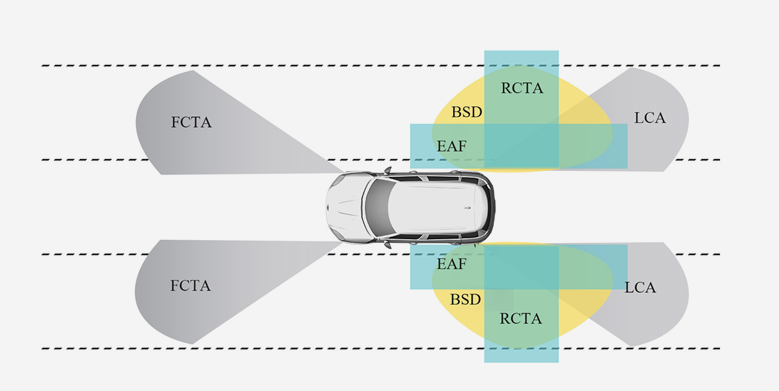
CAR70 function diagram
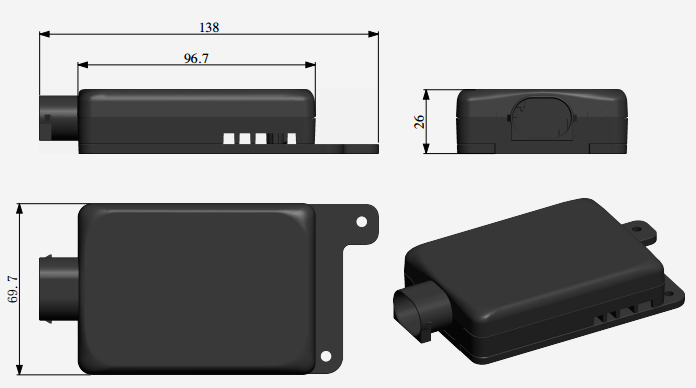
CAR70 contour drawing
CAR70 sensor CAN communication network interface is following the ISO11898-2 specification, the communication rate of 500Kb / s. Universal external communication interface is easy for integration with PC or other ADAS modules.
System detection range map
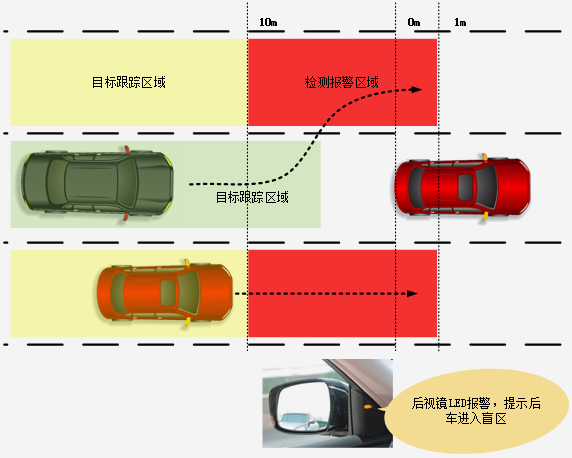
CAR70 BSD / LCA function diagram
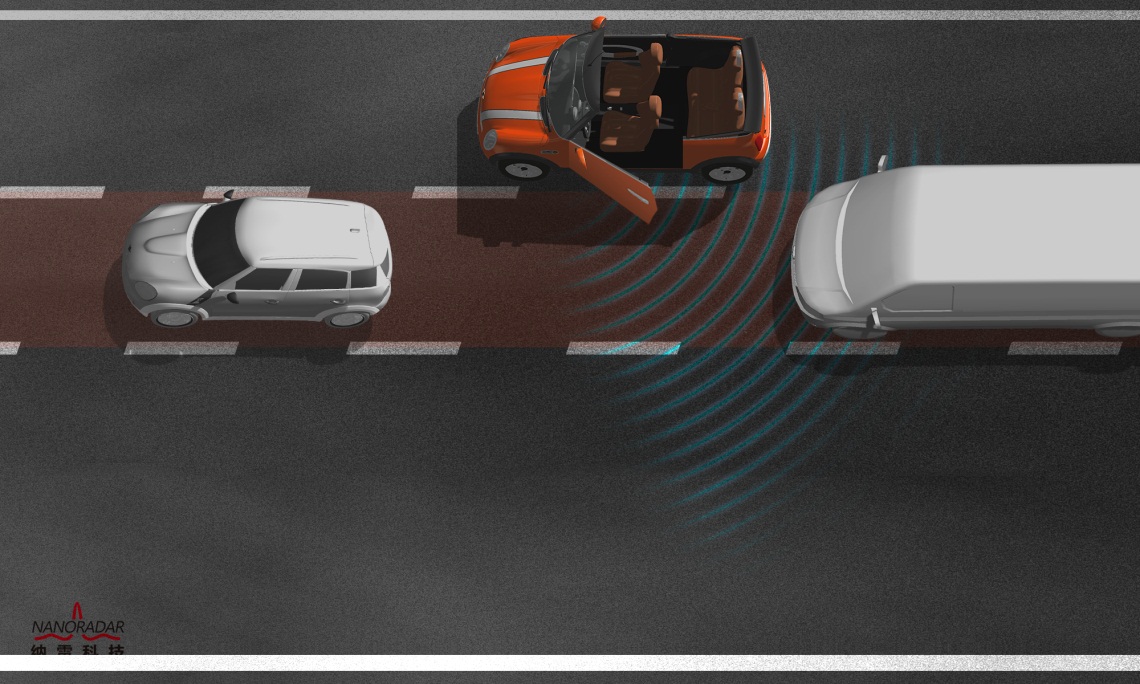
CAR70 EAF function diagram
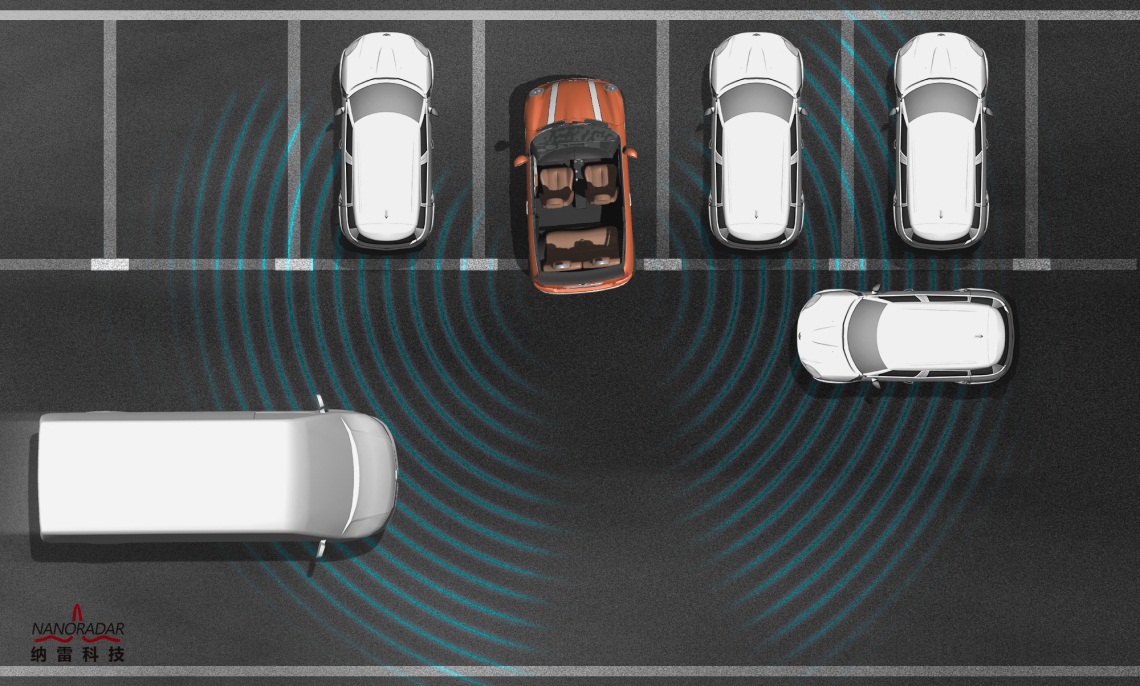
CAR70 RCTA function diagram


